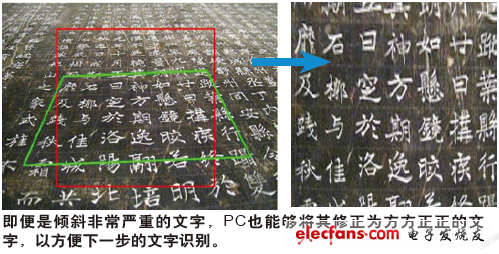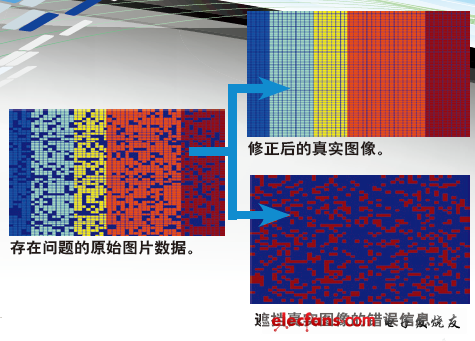In recent years, computer graphics and image processing technology has made breakthrough progress, and more and more amazing graphics processing software has emerged in personal PCs. With the latest research in the field of mathematics, personal computers have begun to learn to "see". Figure, read the text, identify the building.

The traditional PC image recognition technology is mainly based on the statistical principle. It mainly relies on analyzing the characteristics of visual data, and extracts these characteristics by mathematical analysis such as statistical modeling to be finally applied to the actual image processing. This image recognition technology is still the current mainstream, widely used in OCR text recognition, face recognition, image processing and other fields. However, this traditional method of mathematical analysis has many limitations, such as the high quality of the picture, which is not improved until the new mathematical model appears. In the “Fashion Technology†section of CHIP in May 2010, we introduced a new development of PC image recognition technology. In 2009, some mathematicians represented by Chinese-American mathematician Tao Zhexuan took the lead in discovering some previously recognized difficult (NP-hard) combination problems in high-dimensional space, which can be solved by a series of efficient convex optimization algorithms. The resulting mathematical model can be used to solve the problems faced by current visual computing, and the final calculation results are very satisfactory.
Researchers at Microsoft Research Asia used this mathematical idea to make a big breakthrough in the field of image recognition. Even with this new mathematical model, faces with masks or sunglasses can be read and recognized by PCs. Recently, researchers at Microsoft Research have made new progress in this area of ​​technology. They have enabled PCs to see "understand" buildings, or have the ability to "recognize" words and correct distorted or distorted text.
Reading the picture begins with understanding the structure

Traditional 2D image recognition technology relies more on image feature points to work. It first obtains the most representative points in the image by statistical means, and then tries to find these features when encountering new images. Point and compare the found points with the original statistical feature points. This technique works well when the picture quality is excellent and there is no distortion. However, the reality is that when we take pictures, we can't get qualified images because of the light, the location and so on, which greatly limits the development of this image recognition technology.
Researchers at Microsoft Research Asia have tried to solve this problem using high-dimensional mathematical models and optimization tools. Simply understand that high-dimensional mathematical models use a matrix model that helps us to look at objects in an image as a whole, rather than just acquiring local feature points as in traditional techniques, which is more like seeking the whole of objects in an image. Symmetry and regularity. For example, the windows of a typical building are all straight rectangles, and the table is always square and has 4 legs. With these rules, even if the picture can only provide limited information, the PC can more easily identify the objects in the picture. In the high-dimensional mathematical model, the data input to each point can be used to predict a certain regularity, so this high-dimensional image recognition technology can use almost every pixel in the image to obtain the overall rule of the object in the image. Structure, which means that only a small portion of the image can be used to correct and identify objects in the image. For example, in the traditional image recognition technology, the image area of ​​100&TImes;100 often does not provide much feature point data, but in high-dimensional image recognition technology, this means that nearly 10,000 pixels can be used to acquire images. Rule structure information.
Reading from a human perspective

The use of regularity and regularity to identify the surrounding environment and scenery is the basic skill of human beings. In fact, a person is learning a variety of rules from birth. For example, what is a rectangle, what is a circle, what the table looks like, what the house looks like, and so on. High-dimensional image recognition enables computers to have the same image recognition method as humans. When we saw that the window of the building in the photo was tilted because of the problem of shooting angle, we didn’t think that the window was really tilted. We even knew that the window should be square, and we could tell the difference. The tree raft in front of the window is not part of the window. Similarly, by establishing the laws of objects that are recognized by high-dimensional images, researchers at Microsoft Research have been able to make PCs perform similar functions, which can help us calibrate tilted buildings or wipe away branches in front of buildings.
From this we can also understand the strengths and weaknesses of this technology. Any object or image that follows certain rules can be identified by establishing rules. Any object or image that is not regular is this. Techniques tend to have larger limitations. For example, dealing with an object in a messy flower is not the skill of the technology. Generally speaking, regular objects are often created by humans, because from the most basic concept of human beings, humans believe that the world is simple and has a structured structure, which is simple to follow when creating various objects. The principle of easy to use, under the influence of this principle, things without rules will be phased out. The rules are not as complicated as we think, and we don't need to create a rule for every object in the world. The rules here are actually a classification of mathematical structures. Many objects look the same in terms of mathematical structure, so we only need to establish some important rules. Of course, there are some special things to establish rules separately, such as text.
The combination of characters invented by human beings, under the adjustment of human aesthetics and regular thinking, gradually perfected and established a good regularity, such as horizontal and vertical and various overall or partial up and down symmetry. Whether it is English, Chinese or other texts, there are basically strong rules, and such rules can be summarized and summarized mathematically. Such images have a very low-dimensional internal structure in high-dimensional space. For example, at present, except for the fact that Chinese characters with few strokes are not regular, most Chinese characters have strong regularity.
In general, this high-dimensional image recognition technology can solve some image recognition problems that we could not solve in the past. After gradually improving, it will completely change the way we recognize and manipulate pictures. High-dimensional image recognition technology Before the object in the image is identified, the user has to tell the computer where the regular object is being recognized. The next step is to make the computer more intelligent to find out where there are rules in the image, where there are no rules, and how to use different rules for different positions of the image. Another development of this technology is to improve the efficiency of computing, such as the ultimate real-time operation on terminals such as smart phones.
Twins Bluetooth Earphone are popular for its idea, function and beauty. Barrier-free transmission distance over 10 meters, connection is not stuck, and strong penetration. Answer/end/reject/transfer, call waiting, redial, mute, multi-purpose devices connection, music pause/play/next, noise reduction, stereo, etc. It should be the first choice of Bluetooth Earphone.
Twins Bluetooth Earphone
Twins Bluetooth Earphone,Twins Wireless Bluetooth Earphone,Twins Wireless Earbuds,Double Earphones
ShenDaDian(China) Digital Electronics Co.,Ltd , http://www.btearbuds.com
